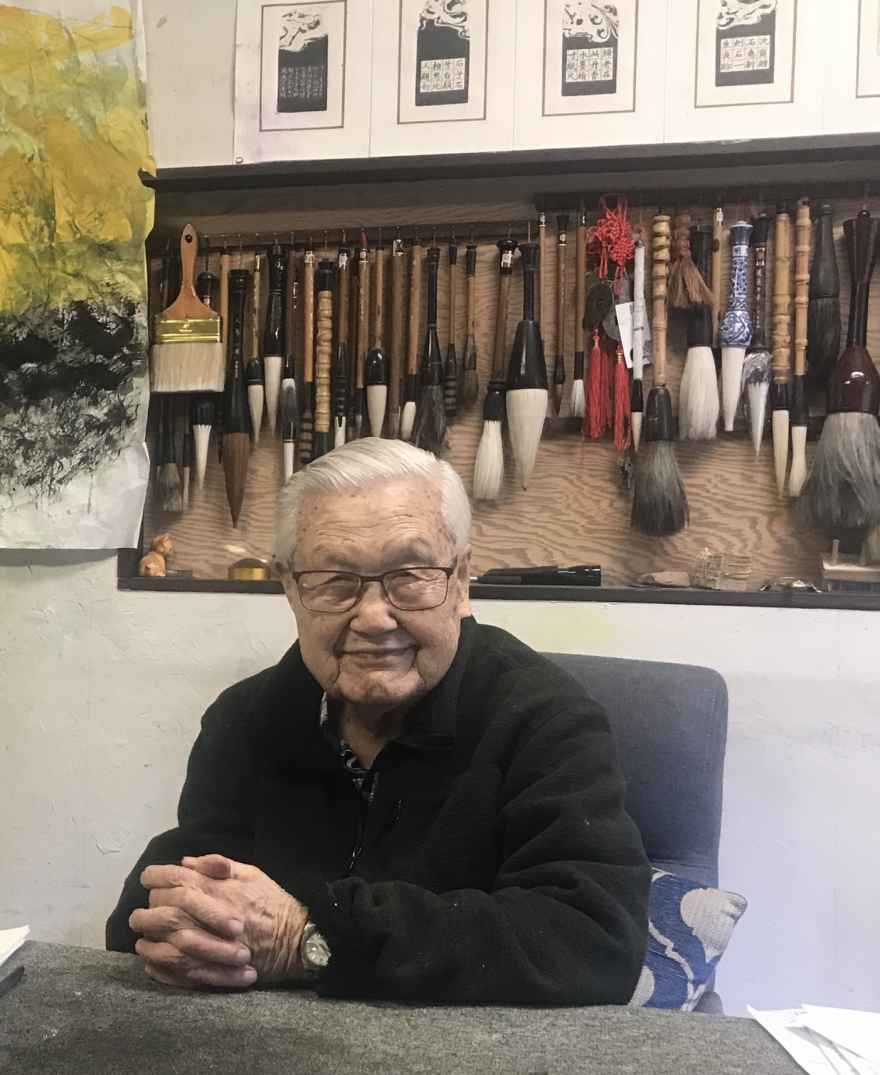Advancing Innovative East Asian Arts Research Within the Humanities

By Sara Patterson
Mark Barnekow (MBA’88) and his wife, Jean Song, are passionate about the arts and Chinese culture and have been deeply inspired by Hou Beiren, the 105-year-old Chinese American artist. They have been so moved by the man and his artistic practice, they recently decided to endow the ‘Hou Beiren Graduate Student Enhancement Fund’ in the Center for the Art of East Asia within the Division of the Humanities.
“We are truly grateful to Mark and Jean for their commitment to East Asian arts in making this significant gift to the Division of the Humanities,” said Anne Walters Robertson, Dean of the Division of the Humanities and the Claire Dux Swift Distinguished Service Professor in the Department of Music. “This fund recognizes the rigor of the humanities as an indispensable mode of inquiry and the relevance of studying East Asian art at the University of Chicago.”
“The University of Chicago is a dominant academic force in the humanities,” Barnekow said. “We are honored to play a small part to support our faculty to attract high-potential graduate students who are conducting transformative research to advance the humanities around the globe.”
In his current role as Executive Director of the University of Chicago Francis and Rose Yuen Campus in Hong Kong, Barnekow has collaborated with the University of Chicago’s Center for the Art of East Asia and recognizes the value of its ground-breaking approach to teaching and research.
Wu Hung, the Harrie A. Vanderstappen Distinguished Service Professor in the Department of Art History, has lead the Center’s cutting edge research since its founding in 2003, and emphasizes the continuity between historic and contemporary East Asian art and global art. Wu Hung and his colleagues encourage research in unexplored areas of study, collaborate with many scholars within and outside of UChicago, and cultivate new visual experiences using technologies for the study of East Asian art and visual culture.
“Wu Hung has an international reputation, a deep knowledge of art history, and the ability to attract the top faculty and graduate students to advance the Center for the Art of East Asia’s reputation as the premier center of its kind in the U.S. and abroad,” Barnekow said. “Through this gift, we hope to ensure the University of Chicago will continue to attract and support top graduate students and extend its global influence in the arts of East Asia for many years to come.”
An artist, author, poet and teacher, Hou Beiren was born in Liaoning Province, China in 1917. He studied painting with another Chinese master, Huang Binhong, after he received a scholarship to attend Kyushu University in Japan. In 1949, he moved his family to Hong Kong and made his living as an author while continuing to paint.
In 1956, Hou Beiren moved to San Francisco and his painting skills quickly attracted attention and earned him his first exhibition at the De Young Museum. In 1979, he founded the American Association for the Advancement of Chinese Art (ASACA) and taught hundreds of students’ Chinese ink art.
Over the last six decades, Hou Beiren has worked tirelessly to redefine and innovate Chinese traditional landscape painting using “splash color ink” and “wild calligraphy” techniques. His paintings are widely collected by many leading museums internationally.
Hou Beiren’s paintings remain true to ancient Chinese landscape themes, Chinese calligraphy, and references to ancient Chinese poetry. But they also seamlessly blend Chinese traditional painting techniques with contemporary Western abstraction to establish a new direction for Chinese ink art.
“Hou Beiren is a symbol for many Chinese Americans who work hard and make significant contributions to the arts, humanities and other fields,” Barnekow said. “Jean and I are honored that the Hou Beiren Graduate Student Enhancement Fund will help support research in the Center for the Art of East Asia. We want to recognize the contributions of an exceptional artist who has helped to redefine traditional Chinese ink art while also helping to benefit the important work our graduate students are pursuing in East Asian Arts.”